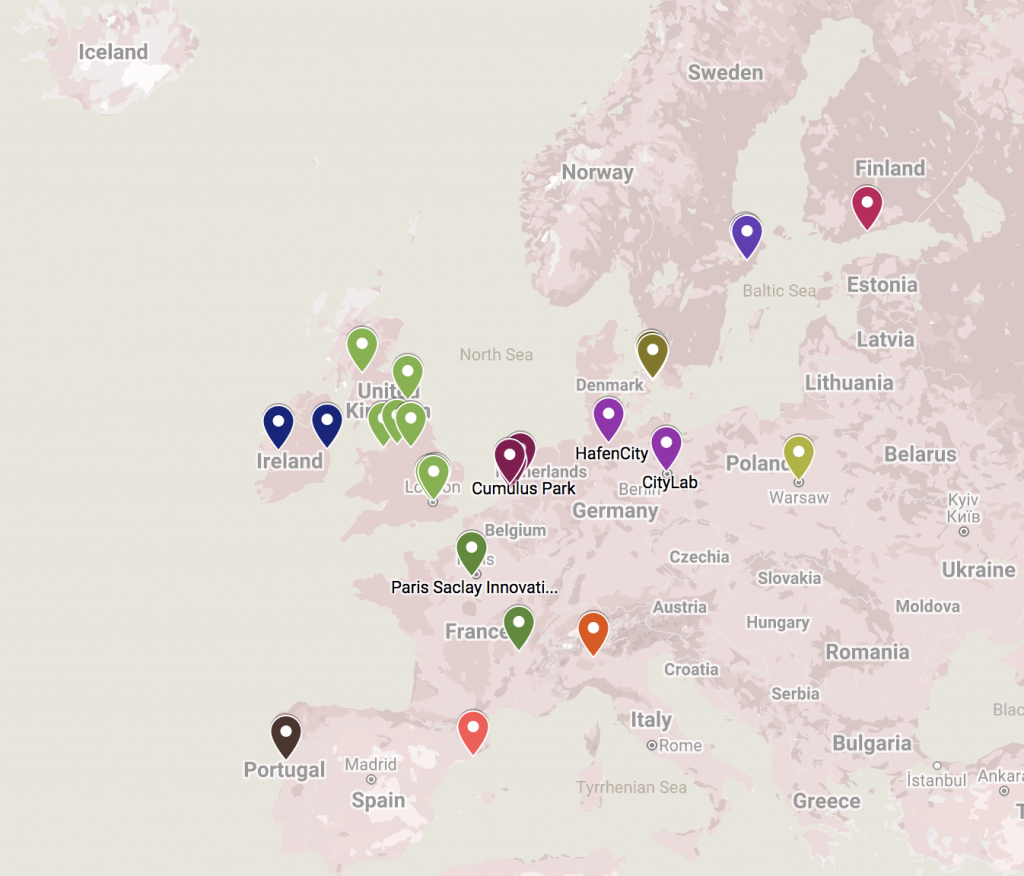
Over the past two decades, innovation districts have changed the landscape of research, culture, and collaboration worldwide. Through innovation districts, under-resourced urban areas, often the vestiges of post-industrial decline, are transformed into vibrant social and economic hubs. Further, academic institutions, startups, and large corporates work in close proximity and are united by the shared goal of open innovation.
Increasingly, innovation districts are engaging their local communities as essential thought and talent partners. These relationships foster systemic linkages between innovation and inclusivity. At SeedSprint, we endeavor to bring this model into the virtual sphere.
Today, there are over 100 innovation districts around the world. In the past, we have highlighted innovation hotspots around the world.
Now, we turn to the continent where it all began: Europe. Here are five innovation districts you need to know.
22@Barcelona: The Birthplace of Modern Innovation Districts
The concept of an innovation district was born in Barcelona, Spain in the year 2000. At that time, 22@Barcelona became the first municipal initiative of its kind. The district was the brainchild of the city council committee, Ajuntament de Barcelona. Since its inception, its goal has been to foster social, urban, and economic development.
Over the past 20 years, 22@Barcelona has successfully transformed El Pablenou, a former cotton mill district close to the city center, into a knowledge center and innovation hub.
Today, 22@Barcelona employs 90,000 people, houses 4,500 new companies, and attracts startups from around the world. The district’s greatest success is its emphasis on creating the social opportunities required for economic and cultural development. Most notably, the district promotes affordable housing, high living and working standards, and accessibility via public transit and walkability. The district also emphasizes the cross-sector collaboration of universities and research institutions, large corporations, startups, and the local community.
According to the Barcelona & Catalonia Startup Hub’s 2019 report, Barcelona now has over 1,500 startups in more than 40 industries. 22@Barcelona’s success has inspired many cities around the world. Read on to discover some other European innovation districts that have followed suit!
Cumulus Amsterdam: Expanding Beyond Traditional Sectors
In 2019, Amsterdam’s Cumulus Park emerged as a collaboration between the City of Amsterdam, Amsterdam University of Applied Sciences (AUAS), ING, and ROC College. Located in the Zuidoost neighborhood, the district was historically home to a cadre of medical research institutions.
Today, Cumulus Park offers physical spaces for students and entrepreneurs and myriad networking opportunities. The district is also in the process of opening a business campus.
Silicon Allee: Green Technology Innovation
Berlin’s innovation district, Silicon Allee, began as an online community in 2017. Silicon Allee aims to amplify the city’s technology startup scene as an international hub for open innovation. Mirroring Berlin’s innate sense of community and affordability, its campus includes offices, apartments, restaurants and bars, and event spaces.
Silicon Allee serves as an “embassy” to Berlin’s blossoming startup scene. It promotes relationship-building between international partners and residents, allowing for open innovation to grow organically. Recently, Silicon Allee has been active in fostering green technology innovation in response to the ongoing climate crisis.
MIND Milan: The Resiliency of the Innovation District Model
In 2015, MIND Milan was established with the goal of boosting the life sciences sector. Fast forward to 2020, and Milan was, unfortunately, severely impacted in the early stages of the pandemic.
In response, the city has turned its innovation district, MIND, into a source of collaboration and social and economic revitalization. The district developed the MIND Reboot Plan for Italy. The plan’s key strategy was to leverage impact investments. These investments re-allocate resource that benefit the local community by combining sustainable economic development with social and scientific innovation.
Kampus Plus Warsaw: The Next Generation of Innovation Districts
Propelled by an economic growth rate that has quadrupled over the last 20 years, Warsaw is now home to Poland’s first innovation district, Kampus Plus. Like districts before it, Kampus Plus brings together universities, R&D, and locals to foster technology, product, and service innovation.
Kampus Plus uses a “Living Lab” model to put innovations to the test in the very environment where they will be used: the city itself. This method promotes responsive and open innovation that reflects the real needs of the market and the local community.
Connect and Collaborate
To aid your further exploration of Europe’s innovation district scene and which ones may be the right partners for you, we have created a dynamic map. Watch this space to keep up-to-date on the latest additions as Europe continues to be a leader in open innovation.



